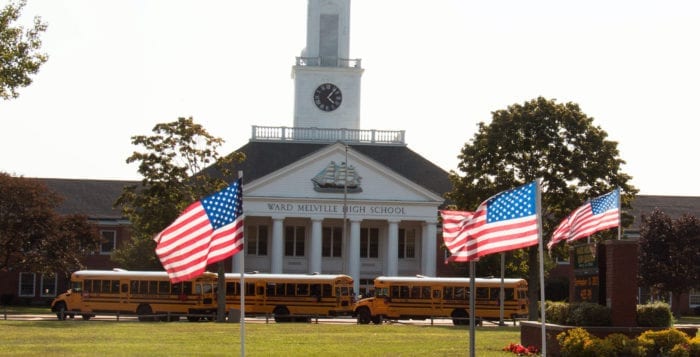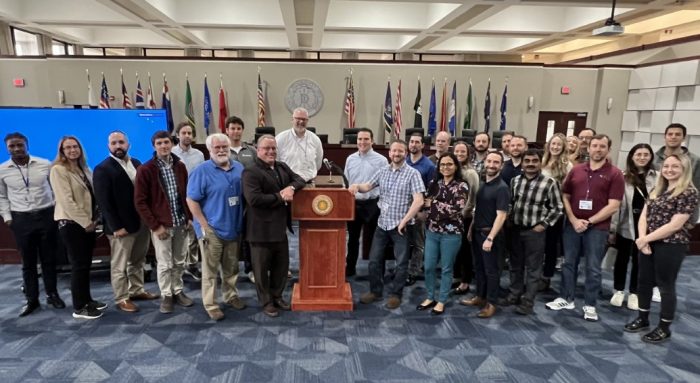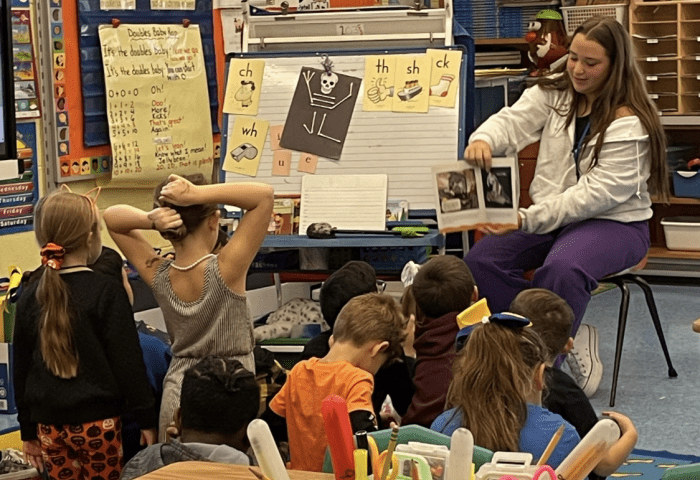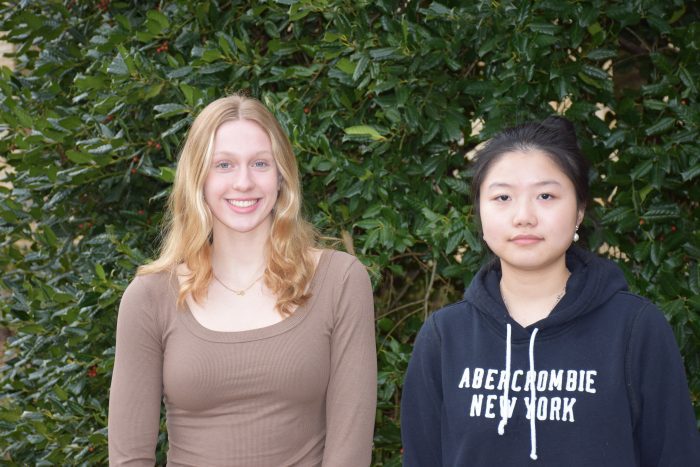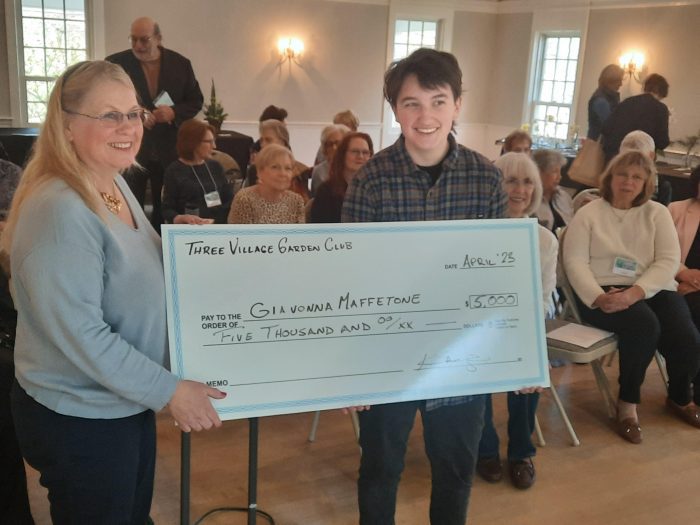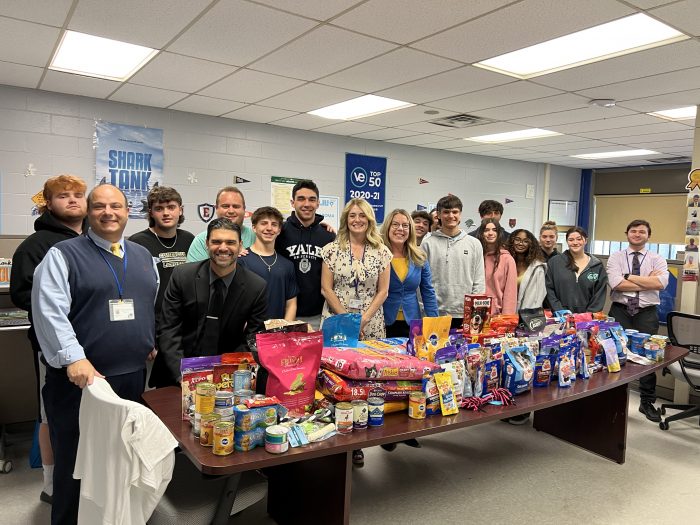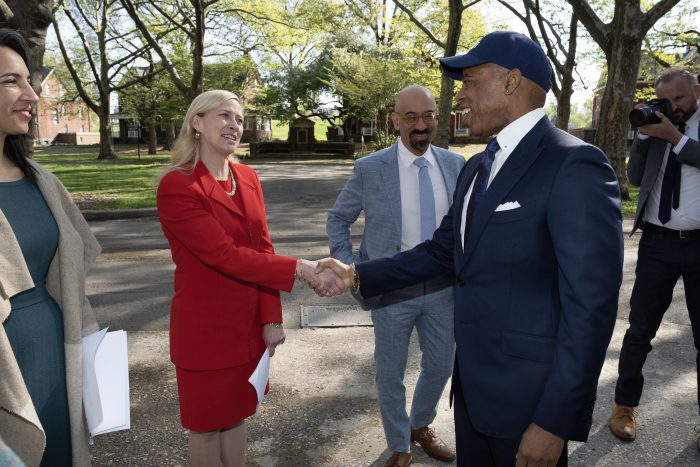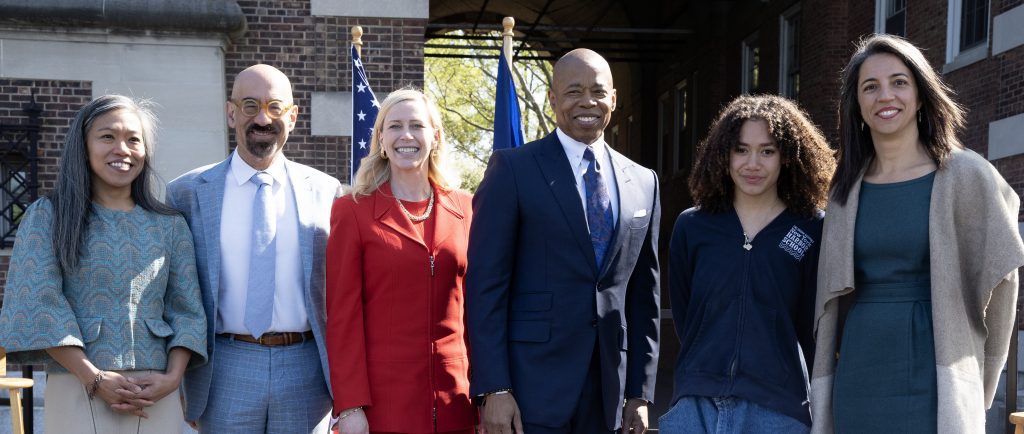By Mallie Kim
The Three Village Board of Education has three seats up for grabs this year and six candidates looking to fill them, including three newcomers, one incumbent and two making repeat bids for seats.
The board candidates, profiled below in ballot order, faced an audience of more than 100 online and a large gathering in person at the Setauket firehouse on Main Street during a Three Village Civic Association meet-the-candidates session Monday, May 1. Questions posed on behalf of the civic by Herb Mones were answered by the candidates about a variety of topics, including the district’s strengths and weaknesses, school security, diversity, equity and inclusion, along with district transparency, communication and their own resumes.
The candidates were due to face questions from the community once again Monday, May 8, but the event was postponed for reasons not provided to the public. The meet the candidates night hosted by the PTA is rescheduled to Friday, May 12 and will be live-streamed on the district’s website.
Voting for board trustees will take place at Ward Melville High School Tuesday, May 16, together with the vote to approve next year’s $230.9 million budget from 6 a.m. to 9 p.m.
A short budget presentation at the civic meeting was made by Jeffrey Carlson, deputy superintendent. In order to stay within the district’s 2.65% tax levy increase cap mandated by the state, the district is cutting 30 full-time positions.
Superintendent Kevin Scanlon said at the board’s budget hearing May 3 that at least half of those positions will likely be at the elementary level, and he added by email that though every school will see teaching positions cut, the district can’t provide specifics at present as the adjustments are ongoing.
At the same budget hearing, Scanlon dismissed what he called “false rumors” that class sizes will skyrocket to over 30 in elementary classes, and referred to a chart in the budget presentation that lays out the maximum allowable averages for class sizes in each elementary grade. He compared next year’s projected averages to those of this year and the pre-COVID 2018-19 school year. The biggest projected jump is in fifth grade, which should see an average of 23 students in each section across the schools. There were 21 fifth graders per class on average in 2018-19, and 20 this year.
The superintendent also mentioned some high school classes currently have 15 or fewer students. “We can’t afford to do that anymore,” he said. “That is not fiscally responsible, and we must tighten the belt in those areas.”
All of the board candidates at the civic meeting raised concerns over the budget, an issue of community interest as the district has been working to recalibrate to account for declining enrollment and increasing costs. The candidates also agreed increased transparency from the board would benefit Three Village residents.
 Karen Roughley
Karen Roughley
Roughley, mom of two teens in the district, said she wants to maintain the current quality of staff and student experience for the future. To do that, she said, “we must be taking a close look at the budget to ensure that the district will be financially sustainable for years to come.”
Roughley spent her career working in corporate communications, business continuity and crisis management for an investment bank. Since staying home with her children, she has served in many volunteer positions in the district, including as president for multiple-campus parent teacher associations as well as for the Special Education PTA. She was on the reopening task force during the COVID-19 pandemic and the districtwide Diversity, Equality & Inclusion Committee, among others. At present, she sits on New York State’s parent advisory committee for the Blue Ribbon Commission on Graduation Measures.
She has publicly advocated on many issues she feels are important for Three Village students, including later secondary start times and the policy nicknamed “do no harm,” which only allows state Regents exam scores to be factored into classroom grades if the scores do not lower the grades. The board recently extended this policy for an additional year and is planning to look into whether or not to make the change permanent.
Roughley, whose two children have received special education services, is passionate about inclusion and diversity, and believes the DEI committee could do more to include the special education population, and also to prevent bullying on district campuses.
As an independent candidate, Roughly said she supports community involvement in major decisions, especially divisive decisions.
When asked about the idea of putting armed guards on school campuses, Roughley made it clear she believes all stakeholders should be part of any discussion — teachers, parents and the community at large. “Part of being a board member is you’re an extension of the community,” she said. “It should not be a decision from anyone from the board without having community input first.”
Roughley also ran for a board seat in 2021 and is running on the same ticket as David McKinnon.
 David McKinnon
David McKinnon
McKinnon, father of three and a 30-year-plus resident of Three Village, has a “longstanding interest in public education,” and indicated he is passionate about providing an independent voice on the school board. He made clear at the event that he, like Roughley, was not taking endorsements or campaign support from any lobbying group, referring to the fact that all the current board members won their elections supported by the Three Village Teachers Association.
McKinnon, a professor of neurobiology and behavior at Stony Brook University, has served on the districtwide DEI and budget advisory committees, and is a founding member of the Three Village Parents Alliance, through which he has advocated to improve Three Village schools in light of what he called “remarkably bad statewide education outcomes” in New York education, generally. He expressed specific concern about elementary math and literacy education.
“The community — us — deserves an independent voice on how our district is run,” he said.
“This is not a partisan issue, this is solely about effective management. My goal in running is to create a school board that represents everyone.”McKinnon said he believes the board should rely heavily on the community for decisions about curriculum and running the schools. One of McKinnon’s concerns, though, is bullying. “I don’t feel that the DEI committee was serious in its approach to bullying,” he said. “You can’t learn if you don’t feel safe, you can’t learn if you’re scared.”
On the topic of armed security guards, McKinnon worried that a large-presence, visible security also takes a toll. “There is a downside to all this security in the kids’ lives,” he said. “It makes them less willing to take risks, more likely to have emotional problems, and so this has to be balanced.”
He said school shootings are a tricky issue to address due to the suicidal motivations of the shooters themselves, one that armed guards alone won’t solve. He suggested reintroducing ethics education at the elementary level and gave a vote of confidence to the district’s security and safety coordinator, Jack Blaum, and his efforts over the years to make school buildings secure.
This is McKinnon’s third bid for a seat on the board, after running in 2020 and 2021.
 Kristen Gironda
Kristen Gironda
Gironda, who grew up in the Three Village district, said serving on the board would be a way to give back to the community for the quality of her education — a quality she said she wants to help uphold as she is raising her two children here as well. She is a middle school teacher in the Shoreham-Wading River school district, though she has also taught several elementary school grades, and has worked with special education students and English language learners over her 23 years as a teacher.
Gironda and fellow first-time candidate Michele Siegel are sisters, and both are endorsed by the Three Village Teachers Association.
Gironda said the biggest challenge in the district now is “resolving these issues with the budget while simultaneously trying to do what is in the best interest of our students’ well-being and health, with initiating a later start time and simultaneously reconfiguring the schools — and doing that in a fiscally responsible way.”
She has held several volunteer positions in the community, including as a trustee on the board of Play Groups School, and as vice president of the PTA at Minnesauke Elementary School. Also, she was on the reopening task force for the district during the COVID-19 pandemic, and served on the DEI committee for Minnesauke. She has coached for Stony Brook Soccer Club and was recently elected to the board of the Three Village Swim Club.
Gironda said she is not opposed to armed guards, but would take into account the expertise of the district safety team and local law enforcement. She said, after reviewing the district’s safety plan and speaking to Blaum, “I felt with full confidence that I was sending my children to school each day and that they were safe — that every precaution was being taken to protect our children and our staff by our security team.”
She also said that the board could do better to find out what community members are thinking. “One thing that I think we could improve on is seeking out those voices that maybe aren’t being represented, figuring out who those people are,” she said. “We can work to have a more open and transparent and ongoing dialogue so people feel comfortable sharing their opinions, their views, their thoughts.”
 Gabriela Alvanos
Gabriela Alvanos
Alvanos, a 16-year resident of Three Village, said she would like to bring her particular experience to bear in addressing bullying and inclusiveness issues in the district. Her two elementary-aged children both receive special education services. She is the founder of NuPrisma, an organization that empowers individuals with disabilities, and works with businesses and communities to create more accessible and inclusive environments.
“I am here to be in service of all of our students, whether they are part of the English language learners program like I was, or part of special education like my children are, or general education or the gifted program,” she said. “Every student, regardless of their background or ability, should have access to opportunity that builds, supports and challenges them to excel in their learning and that empowers them to live and integrate in society with dignity.”
Alvanos, the third independent candidate, said she believes it is time to move from awareness of DEI issues to practical implementation of inclusion, down to the classroom level. She also cautioned that though many efforts are well meant, sometimes DEI programming can be implemented in a way that unintentionally increases bias.
She mentioned after the event that one issue that spurred her to run this year was concern over sixth graders moving up to middle school — she said she wants to be on the board to make certain the district puts social and emotional supports in place to aid the transition to secondary school for children at that age.
Alvanos said she is in favor of well-trained, vetted armed security only on the perimeter of school campuses — not inside school buildings. She also supports making the “do no harm” policy permanent.
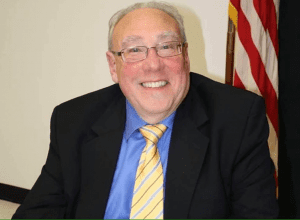 Dr. Jeffrey Kerman
Dr. Jeffrey Kerman
Kerman, the only incumbent in the group, has served 17 years on the board — including two years as president. He said he wants to continue serving to keep the district “as good as it is” and even help make it better. Kerman told the audience, live and online, that he serves out of gratitude for the district educating and preparing his two sons to succeed in society. Both received special education services, he said, and both became honors students in high school and college. “Our district did wonderfully with them,” he said. “I want to pay back how great they did with my sons. It was wonderful.”
Kerman, a dentist, praised the district and spoke of ways the board has served the community. “We’re always planning and always looking forward to making things better,” he said, pointing to this school year’s strategic planning commission that culminated in a survey to narrow down which restructuring plan stakeholders preferred.
The board recently charged the administration with in-depth research to see what the costs and logistics would be, should the board adopt the plan. “We always try and get information from our community, from our parents, from our teachers, from our administrators, so that we on the board can make the best informed decisions that can help the district,” he said.
On the topic of school safety and armed guards, Kerman pointed out that Three Village has served as a model for Suffolk County in implementing school safety procedures. “We are very, very strong as far as our safety goes for our students,” he said, adding that the board has been discussing the pros and cons of armed guards carefully.
 Michele Siegel
Michele Siegel
Siegel, mother of two elementary-aged students in the district, said she and her firefighter husband are proud to raise their kids in the district where they both grew up. “I feel passionate about giving back to the community that has helped shape the person I am today,” she said. “I’d be incredibly honored to be able to represent the voices of our entire district to make informed decisions.”
She called herself a “numbers and facts individual,” and is the associate director of research for a media company, with experience applying evidence-based strategies and managing budgets, teams and contracts. Siegel, alongside Kerman and her sister Gironda, is supported by the teachers union.Siegel previously served as president of the board at Play Groups School, and has coached for Stony Brook’s intramural soccer teams and is a team manager for the Stony Brook LGN travel soccer program. She also mentors students at her alma mater, Muhlenberg College of Allentown, Pennsylvania.
When asked about armed guards in schools, Siegel said if she were elected, she would request a meeting with Blaum at the district and law enforcement professionals “to understand every factor that would have to be considered and how it may integrate and align with the existing overall emergency plan — the emotional well-being and physical safety of our students and staff is a priority.”
She added that she would come into a trustee position open to learning. “I do not know the answer to every single question,” she said. “It’s for me to reach out and understand the experiences of everyone in this community to make informed decisions.”

